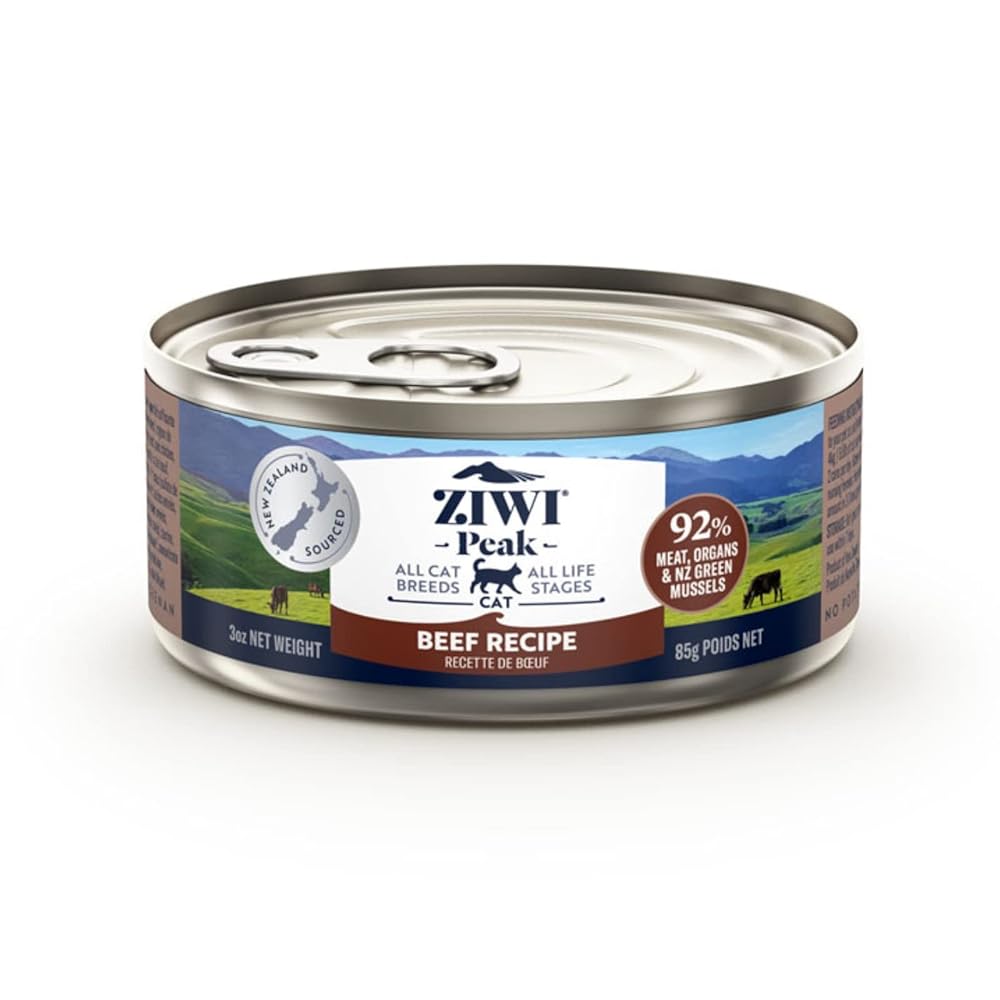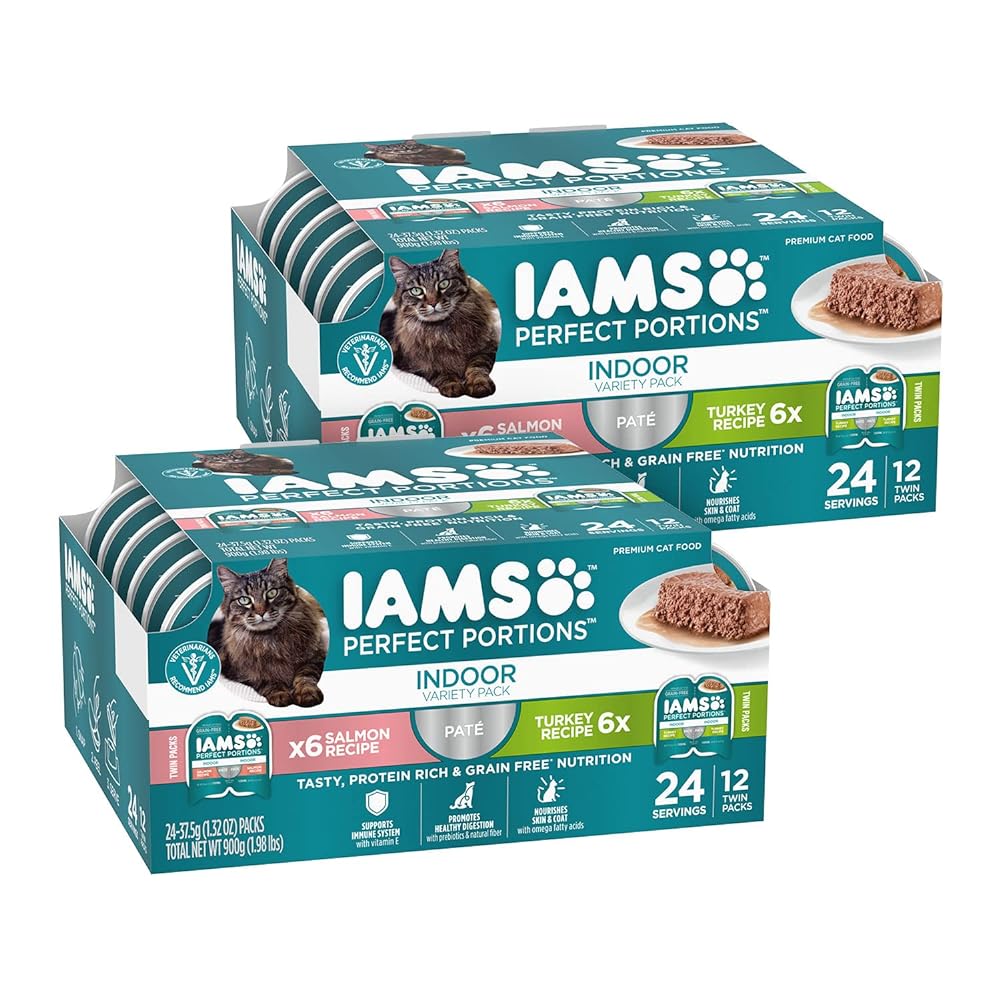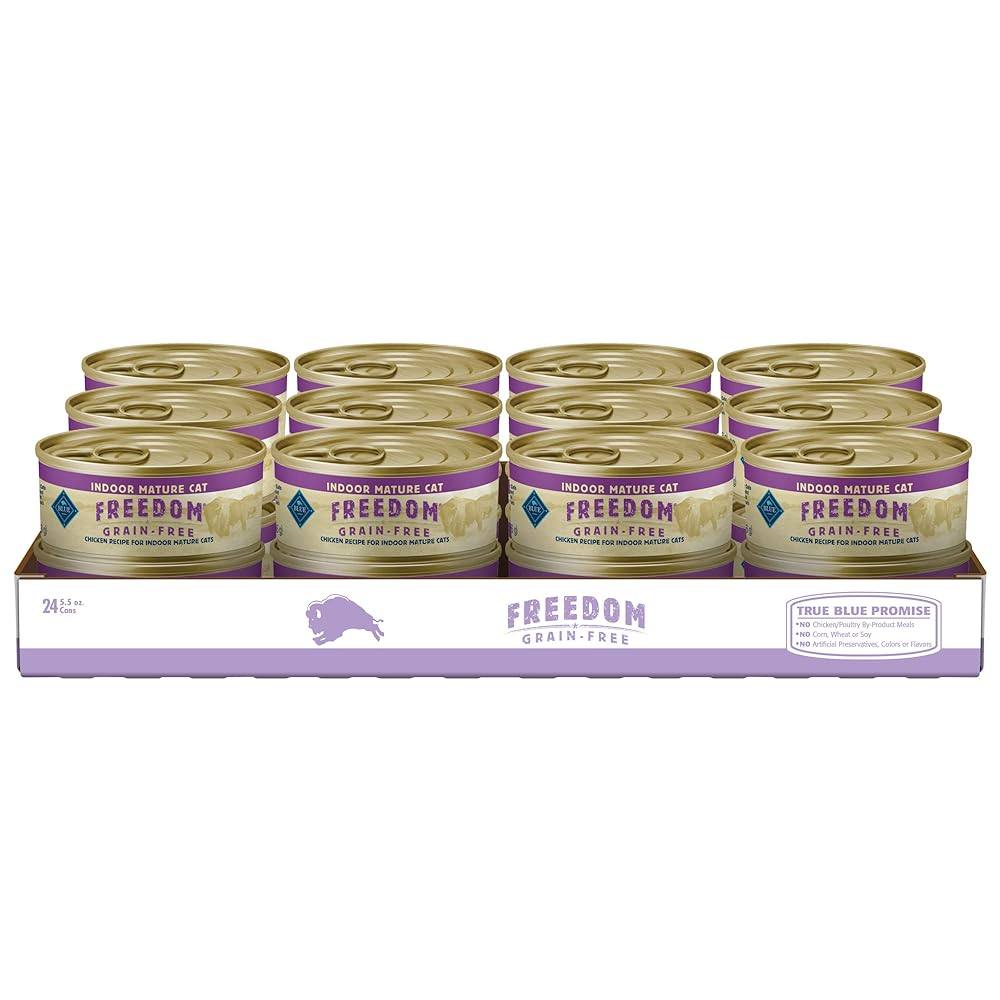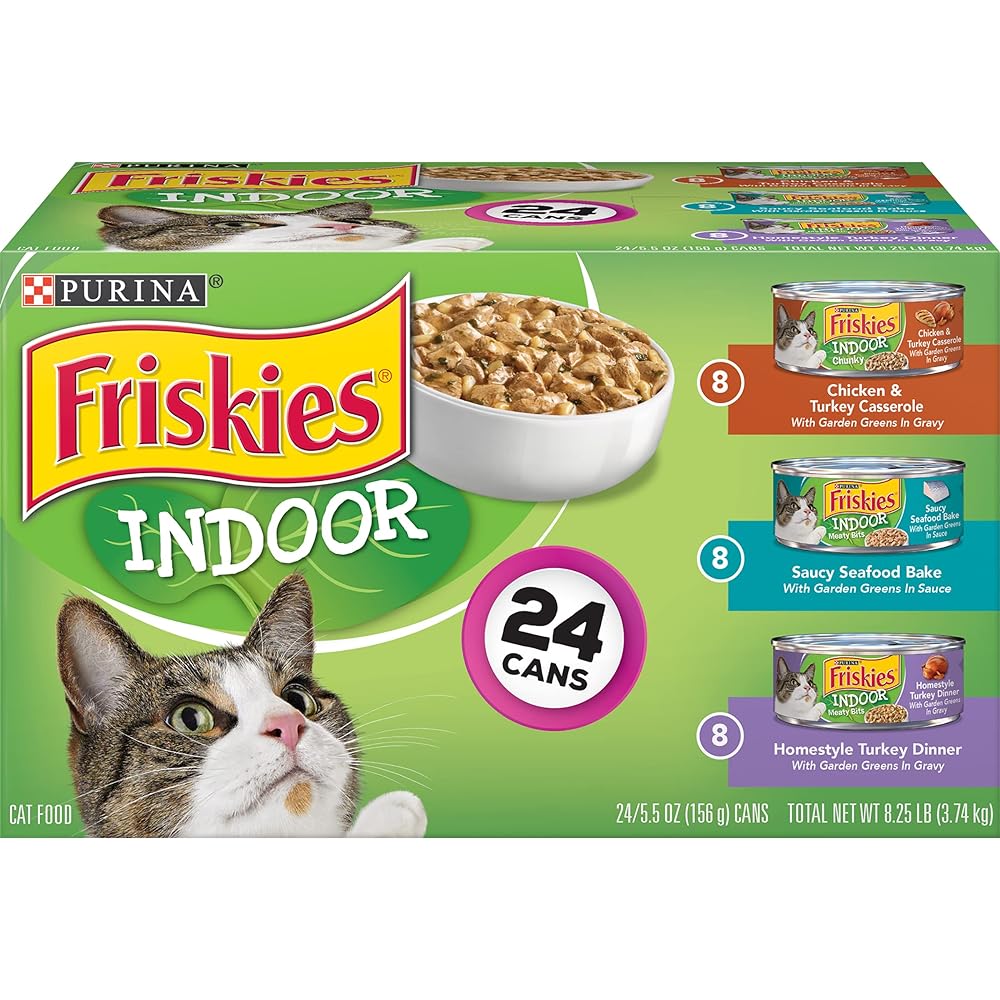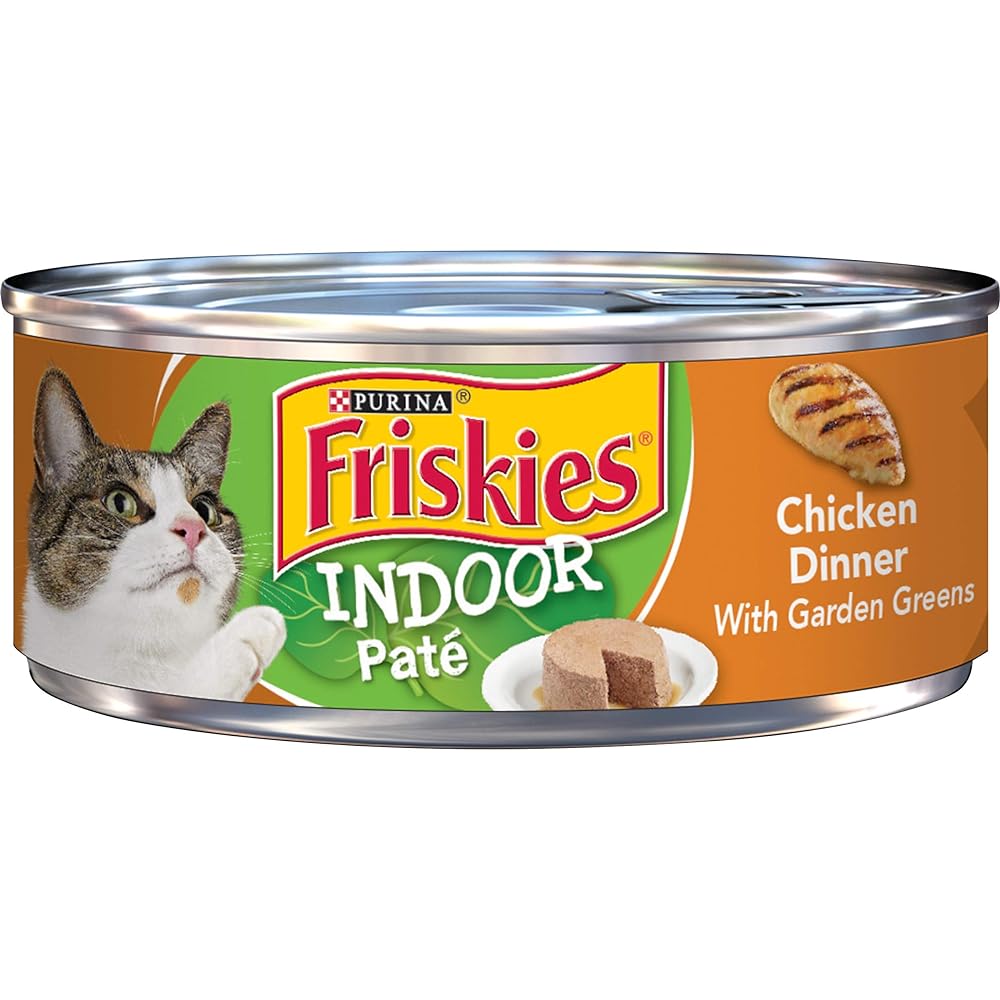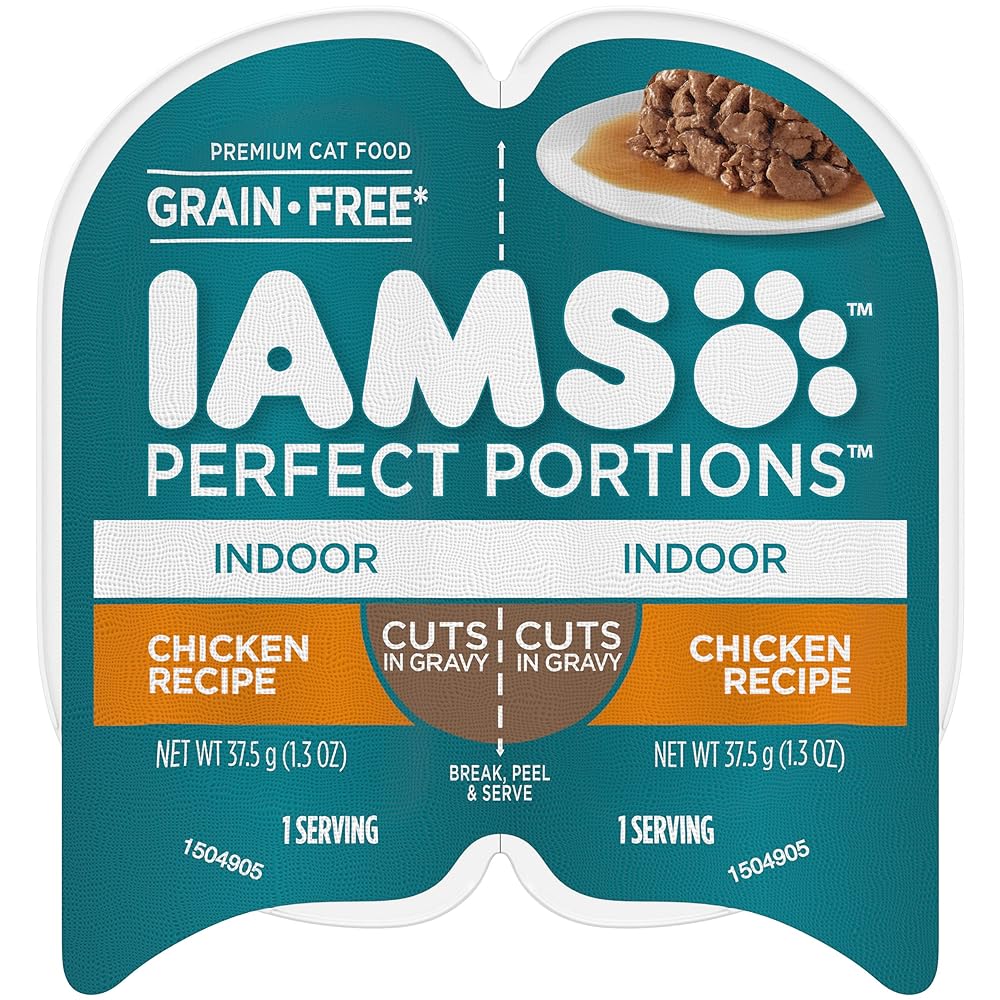iHeartCats is reader-supported. When you buy via links on our site, we may earn an affiliate commission at no extra cost to you.
Indoor cats have distinct nutritional needs that differ from their outdoor counterparts, owing to a generally more sedentary lifestyle and unique health considerations like a greater propensity for weight gain and hairballs. Choosing the right type of wet food can play a crucial role in maintaining their overall well-being. This article aims to guide you through the best-wet cat food options for indoor cats, focusing on key ingredients, nutrients, and other factors that can contribute to a healthier, happier feline.
#1 – ZIWI Peak Canned Wet Cat Food – All Natural, High Protein, Grain Free, Limited Ingredient, with Superfoods (Beef, Case of 24, 3oz Cans)
ZIWI Peak Canned Wet Cat Food is an all-natural, high-protein, grain-free cat food that is made with limited ingredients and superfoods. It is air-dried to eliminate pathogenic bacteria and is made with only quality New Zealand meats. This cat food is high in protein and nutrient-rich, grain-free, and low in carbs, making it suitable for food-sensitive cats. It can be used as a topper or a complete meal for cats of all life stages.
Best For: Food-sensitive cats and providing peak nutrition.
#2 – IAMS PERFECT PORTIONS Indoor Adult Grain Free* Wet Cat Food Pate Variety Pack, Salmon Recipe and Turkey Recipe, 2.6 oz. Easy Peel Twin-Pack Trays 24 Count, (Pack of 2)
The IAMS PERFECT PORTIONS Indoor Adult Grain Free Wet Cat Food Pate Variety Pack is a convenient and nutritious option for indoor cats. The pack contains 24 twin-pack trays, with 12 servings each of Salmon Recipe and Turkey Recipe. These grain-free recipes are complete and balanced, with no artificial preservatives. The food supports a healthy immune system and comes in easy-to-serve trays for a mess-free meal.
Best For: Indoor cats on a budget. (best on a budget)
#3 – Natural Balance Ultra Premium Chicken Indoor Cat Food | Wet Canned Food for Cats | 5.5-oz. Can, (Pack of 24)
The Natural Balance Ultra Premium Chicken Indoor Cat Food is a wet canned food for cats. It contains chicken as the first ingredient, providing essential protein and amino acids for strong muscles. The formula is holistic, caring for the cat’s overall well-being, and is crafted with nutritious ingredients such as chicken, chicken liver, and brown rice.
#4 – Blue Buffalo Freedom Grain Free Natural Mature Pate Wet Cat Food, Indoor Chicken 5.5-oz cans (Pack of 24)
The Blue Buffalo Freedom Grain Free Natural Mature Pate Wet Cat Food is a cat food made with real chicken as the first ingredient, along with fruits and vegetables. It is a pate-style canned cat food that has a smooth texture, making it appealing to cats. This natural cat food is free from wheat, chicken, or poultry by-product meals, corn, wheat, soy, artificial flavors, and preservatives.
Best For: Cats on a grain-free diet.
#5 – Purina Friskies Indoor Wet Cat Food Variety Pack, Indoor – (24) 5.5 oz. Cans
The Purina Friskies Indoor Wet Cat Food Variety Pack is a collection of twenty-four 5.5 oz. cans of cat food formulated specifically for adult indoor cats. The food is made with real poultry or seafood and provides essential vitamins and nutrients for a complete and balanced diet. With delicious tastes and a moist, tender texture, this variety pack offers three different meal options with accents of garden greens.
Best For: Indoor cats with a variety of taste preferences.
#6 – Purina Friskies Indoor Pate Wet Cat Food, Indoor Chicken Dinner With Garden Greens – (24) 5.5 oz. Cans
The Purina Friskies Indoor Pate Wet Cat Food is a complete and balanced cat food option that is designed specifically for indoor cats. It features real chicken, hearty rice, and healthy greens to provide a delicious and nutritious meal for cats. The food comes in recyclable cans and is checked for quality and safety.
Best For: Cats on a budget or looking for a complete and balanced cat food option. (best on a budget)
#7 – IAMS PERFECT PORTIONS Indoor Adult Grain Free* Wet Cat Food Cuts in Gravy, Chicken Recipe, (24) 2.6 oz. Easy Peel Twin-Pack Trays
The IAMS PERFECT PORTIONS Indoor Adult Grain Free Wet Cat Food is a grain-free cat food that comes in convenient twin-pack trays. It contains a wholesome recipe that supports a healthy immune system and provides complete and balanced nutrition for indoor cats. The easy-to-chew meals are served in easy-to-open trays, making it a convenient option for cat owners.
Best For: Indoor cat wellness and convenience.
What Makes a Good Indoor Wet Cat Food?
A good wet cat food for indoor cats should meet several criteria to adequately support their unique nutritional needs:
- High-Quality Protein Source: The first ingredient should be a high-quality animal protein like chicken, turkey, or fish. Cats are obligate carnivores, and their diet should be rich in animal protein to maintain muscle mass and overall health.
- Caloric Content: Indoor cats are less active than outdoor cats, so the caloric content should be moderate to prevent weight gain. Many wet foods designed for indoor cats are formulated with this in mind, offering balanced nutrition without excess calories.
- Fiber for Digestion: Indoor cats often struggle with hairballs and slower digestion due to their less active lifestyle. A good indoor wet cat food should contain a moderate amount of fiber to help with digestion and the passage of hairballs.
- Essential Fatty Acids: Look for foods that contain omega-3 and omega-6 fatty acids. These are beneficial for maintaining healthy skin and a shiny coat, and they also support brain and heart health.
- Low Carbohydrate Levels: Cats are not designed to process high levels of carbohydrates, so a good wet food should have low carbohydrate content. Excessive carbohydrates can lead to weight gain and other health issues.
- Added Vitamins and Minerals: The food should be fortified with essential vitamins and minerals like taurine, calcium, and various B vitamins. These nutrients are crucial for a cat’s overall well-being.
- Hydration: One of the benefits of wet food is that it provides extra hydration. This is particularly important for indoor cats who may not drink enough water, as it helps support kidney and urinary tract health.
- No Harmful Additives: Avoid foods with artificial preservatives, colors, and flavors. These can be harmful or cause allergies in some cats.
- Palatability: Even the most nutritious food is useless if your cat won’t eat it. Look for a food that is known for high palatability to ensure your indoor cat will actually consume it.
- Veterinarian-Approved: As always, it’s best to consult your veterinarian before making any significant changes to your cat’s diet, especially if they have existing health conditions.
By keeping these factors in mind, you can select a wet cat food that not only satisfies your indoor cat’s palate but also meets its specific nutritional requirements.
What Are The Pros and Cons of Wet vs. Dry Foods for Indoor Cats?
Both wet and dry cat foods have their own sets of advantages and disadvantages, particularly when it comes to indoor cats. Here’s a breakdown:
Pros of Wet Cat Food for Indoor Cats:
- Higher Water Content: Wet food is particularly beneficial for providing extra hydration, which can help prevent urinary tract issues that indoor cats are often prone to.
- High in Protein: Wet foods often contain a higher percentage of animal-based proteins, which are essential for cats as obligate carnivores.
- Lower in Carbohydrates: Wet foods usually contain fewer carbohydrates than dry foods, which is beneficial for weight management.
- Palatability: Many cats prefer the texture and flavor of wet food, making it a good option for picky eaters.
Cons of Wet Cat Food for Indoor Cats:
- Cost: Wet cat food is generally more expensive than dry cat food on a per-serving basis.
- Short Shelf Life: Once opened, wet cat food must be consumed quickly or stored in the refrigerator for a limited time.
- Portion Control: Wet food can make it easy to overfeed your cat if you’re not careful, potentially leading to weight gain.
- Dental Health: Wet food doesn’t provide the mechanical cleaning action that dry kibble can offer, so it may not be as effective at reducing plaque and tartar.
Pros of Dry Cat Food for Indoor Cats:
- Convenience: Dry cat food is easy to store and can be left out for “free feeding” without spoiling.
- Cost-Effective: Dry food is generally less expensive and has a longer shelf life than wet food.
- Dental Health: The texture of dry food can help scrape off plaque and tartar, although it should not replace regular dental care.
Cons of Dry Cat Food for Indoor Cats:
- Lower Water Content: Dry food provides less hydration, which could be a concern for urinary tract health.
- Higher in Carbohydrates: Dry foods often contain more carbohydrates, which can contribute to weight gain and obesity in less active indoor cats.
- Palatability: Some cats prefer the taste and texture of wet food, so they might not find dry food as appealing.
- Quality of Ingredients: Lower-quality dry foods may use fillers and by-products that aren’t as nutritionally beneficial for your cat.
Ultimately, the best approach might be a balanced diet that includes both wet and dry foods, tailored to your indoor cat’s specific needs. Always consult your veterinarian for personalized advice.
Frequently Asked Questions About Wet Indoor Cat Foods
1. What makes wet food better for indoor cats compared to outdoor cats?
Wet food can be especially beneficial for indoor cats due to its higher water content, which helps with hydration and can aid in urinary tract health. Indoor cats are generally less active and may not drink enough water, so wet food can help compensate for that. Additionally, wet food is often higher in animal-based proteins and lower in carbohydrates, which suits the dietary needs of less active indoor cats.
2. How often should I feed my indoor cat wet food?
Feeding frequency can vary based on your cat’s age, health, and activity level. Many cat owners opt to feed their indoor cats wet food once or twice a day, often supplementing with dry kibble. Always consult your veterinarian for personalized feeding guidelines.
3. Why do most kibbles have such low protein?
Dry cat foods often contain more carbohydrates and fewer proteins because carbs are generally cheaper to source and help in the kibble-making process. High temperatures used in producing dry food can also degrade some of the protein content. However, premium dry cat foods often strive to include higher protein levels.
4. Why do dog foods have so much carbohydrates?
Unlike cats, dogs are not obligate carnivores and can digest carbohydrates more efficiently. Carbohydrates in dog food serve as a cost-effective source of energy. However, it’s important to note that not all carbohydrates are equal; high-quality dog foods will use better sources of carbs like whole grains or sweet potatoes.
5. Is wet food good for my indoor cat’s dental health?
Wet food does not provide the mechanical cleaning action that dry food can offer to help reduce plaque and tartar. However, the primary method for maintaining your cat’s dental health should be regular dental care, including brushing and professional cleanings, rather than relying solely on food.
6. Can wet food contribute to weight gain in indoor cats?
Wet food itself is not inherently more fattening than dry food, but portion control is crucial. Overfeeding any type of food can contribute to weight gain. Always follow the feeding guidelines on the packaging and consult your veterinarian for personalized advice.
7. Does wet food expire faster?
Yes, once opened, wet cat food should be consumed within a short period (usually 24 to 48 hours) and must be stored in the refrigerator after opening. Unopened cans have a longer shelf-life but always check the expiration date.
8. Is it OK to mix wet and dry food for my indoor cat?
Yes, many cat owners find that a mixture of wet and dry food offers the best of both worlds — wet food for hydration and protein, and dry food for convenience and dental benefits. Just be sure to adjust caloric intake to prevent weight gain.
9. What ingredients should I avoid in wet cat food for indoor cats?
Avoid wet foods that contain artificial preservatives, colors, or flavors. Also, steer clear of foods that list fillers like corn, wheat, or soy as primary ingredients, as these are not as nutritionally beneficial for cats.
10. Should I consult my vet before switching to a wet food diet?
It’s always a good idea to consult your veterinarian before making significant changes to your cat’s diet. This is particularly important for cats with health conditions or special nutritional requirements.
Conclusion: Best Wet Cat Food for Indoor Cats
The world of cat food is vast and varied, but the specific needs of indoor cats narrow down the choices to those options that can truly benefit their health. From high-quality protein sources to the right balance of fiber and fats, choosing the right wet food can make all the difference in your indoor cat’s life. Remember that while wet food offers many benefits, including added hydration and palatability, it should form part of a balanced diet that also includes other nutrients and regular veterinary care. With the information in this article, you’re well-equipped to make an informed decision that best suits your indoor cat’s nutritional needs.

